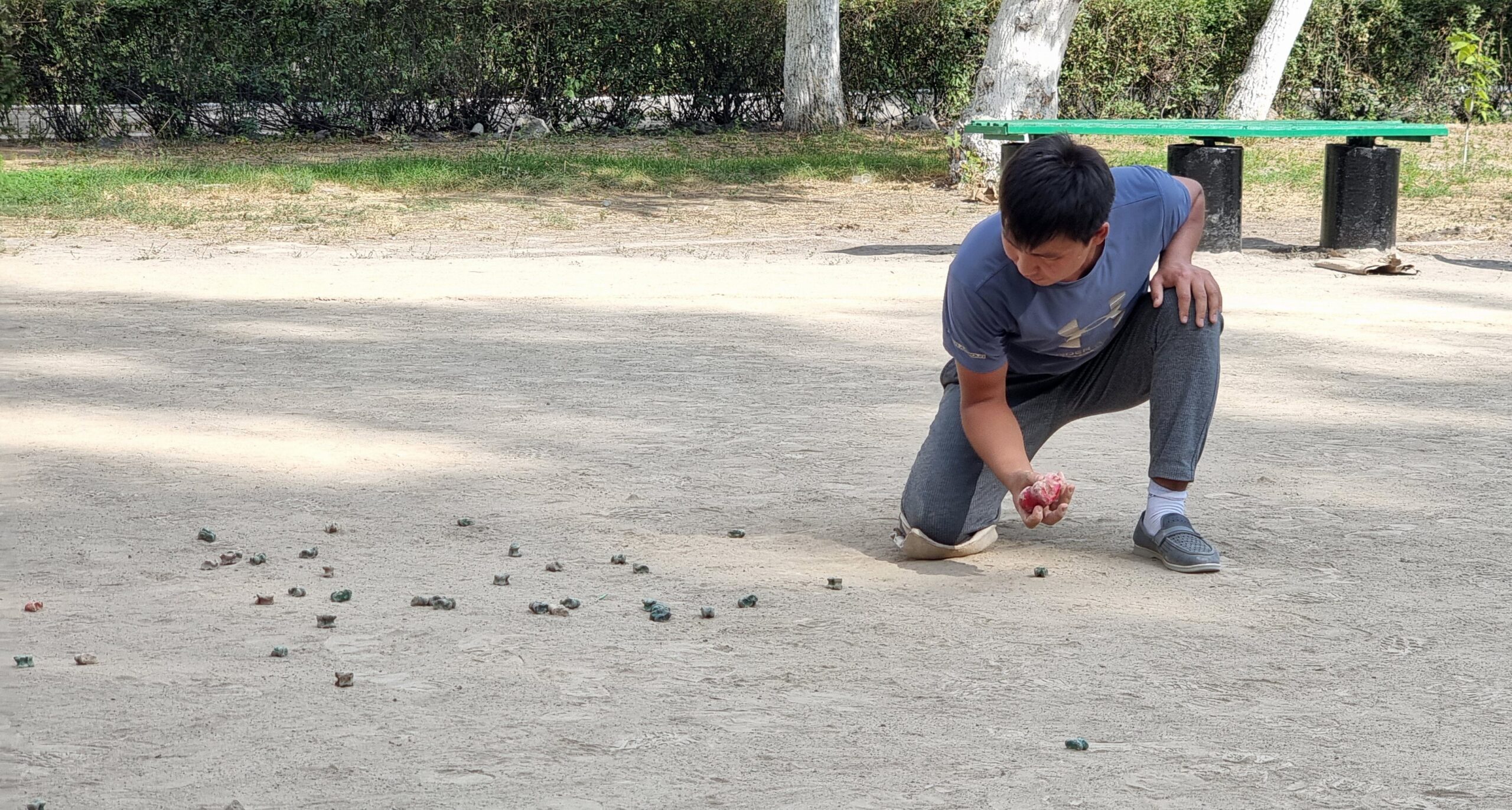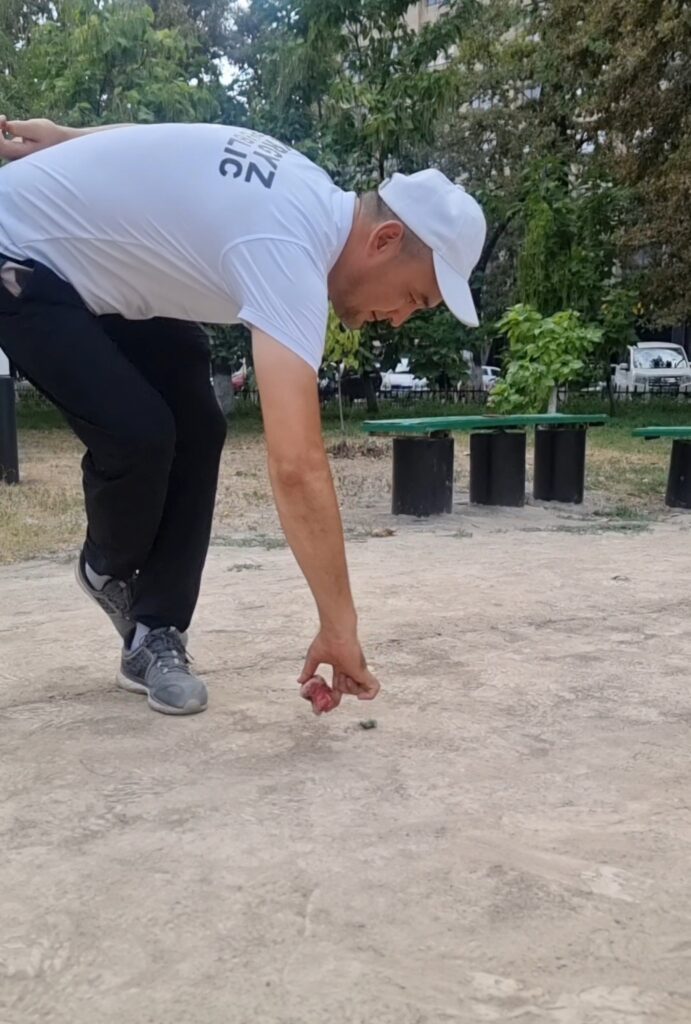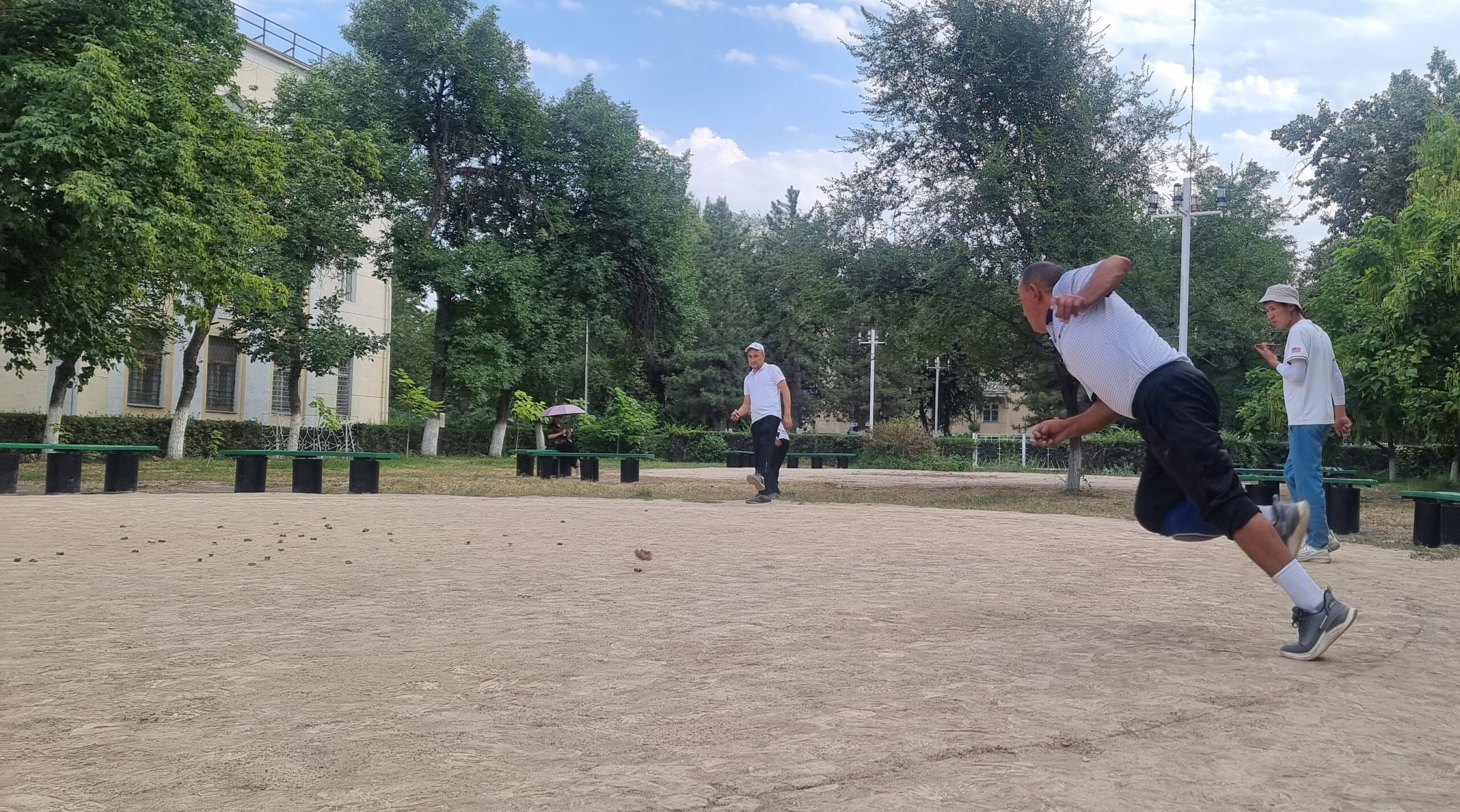BISHKEK – Ordo, the most widespread traditional game in the Kyrgyz Republic, is featured in the World Nomad Games. The word “ordo” refers to the central headquarters of a khan’s (ruler’s) palace, and the game simulates the battle to capture this stronghold. Historically, the game served as a military training tool, teaching warriors how to strategize and defeat their enemies.

Photo credit: The Astana Times.
In an interview with The Astana Times, Zhanybek Aitaliyev, the head coach for Ordo at the Directorate for National Sports of the Kyrgyz Republic, discussed the cultural significance of the game, its rules, and how athletes prepare for this unique sport.
“This game is philosophical and intricate—the circle represents the state, with ordo as its center. It symbolizes the defense of the state against enemies. This concept is even mentioned in the epic of Manas. Before the Great March on Beijing, warriors would play Ordo as a rehearsal for the upcoming battle,” said Aitaliyev.
Rules and techniques
The game is played on a flat surface where a 12-meter diameter circle is drawn. Another circle is drawn one meter outside the first. In the center of the first circle, an oblong hole is dug, 1 centimeter deep and no more than 2 centimeters wide, where the khan, typically a round iron plate 2 millimeters thick, is placed. The khan is protected by warriors, represented by asyk (sheep joint bones).

Photo credit: The Astana Times.
“The objective is for each team to break the khan’s ordo, located at the center of the circle, by using a tompoi (an asyk from cattle, specifically the knee bone of the hind leg) as a bat. The goal is to knock the warriors and the khan out of the circle using one of four allowed methods, depending on the player’s position relative to the circle and the warriors,” Aitaliyev explained.
There should be 68 asyks stacked on top of the khan. If a player knocks out at least one, they get another turn. If the bat remains inside the circle near the nearest bone, the player can continue playing within the circle, which provides a significant advantage. If the asyk is not knocked out of the circle, the player forfeits their turn to a teammate.
“A key technique for winning is how the player enters the circle. A player can enter only if the asyk is knocked out of the circle during the strike and the tompoi remains within 40 centimeters of the nearest asyk in the circle or within 20 centimeters of the khan,” said Aitaliyev.

Photo credit: The Astana Times.
He emphasized that the player can only knock out the asyk and the khan within the circle using “chertuu” blow—a flicking motion performed while kneeling on one knee.
Teams consist of eight members: seven players and one coach. The game lasts one-two hours, during which two teams try to knock out all the warriors and the khan.
“If neither team succeeds within the allotted time, victory is determined by the number of asyks knocked out. If the time expires and the teams have just begun targeting the khan, the game continues until one team successfully removes the khan from the circle,” he said.
Aitaliyev emphasized that each team member plays a specific role, such as forwarder or defender, each with its tactics. Players must meet strict requirements and adhere to rigorous rules, with violations resulting in disqualification from taking a shot.
Health benefits and cultural significance
He noted that the game holds significant cultural value, with participation increasing every year. While once limited to city festivals, today there are numerous annual tournaments, many dedicated to notable figures or holidays.

Photo credit: The Astana Times.
“Nowadays, ordo has gained international recognition, with other countries showing interest in learning and playing the game. Recently, we held the Altyn (Golden) Tompoi international tournament, featuring teams from Kazakhstan, Tajikistan, and Türkiye,” he said.
Aitaliyev also highlighted the health benefits of the game, describing it as “real gymnastics.” Players engage in physical activities like crouching and throwing while simultaneously strategizing to protect their state.
“The game requires strength, accuracy, and endurance. Players train extensively, not only on the field but also in the gym, to build the stamina needed to stay in constant motion. Sometimes, a player covers up to 10 kilometers during a game,” he said.
“I am pleased that this game has been preserved in the World Nomad Games, as it is a cherished tradition we must never forget,” added Aitaliyev.
The Fifth World Nomad Games, taking place from September 8 to 13 in the Kazakh capital, will host 268 athletes competing in 29 sports from the Kyrgyz Republic.
The sports program includes asyk atu, ordo, tug of war, baige, kokpar, horseback wrestling, tenge ilu, qazaq kuresi, ashyrtmaly aba gureshi, togyzkumalak (toguz korgool), kurash, koresh, alysh, mas-wrestling, powerful nomad, a strongman competition, mangala, oware, horseback archery, traditional archery, kusbegilik and kok boru.


